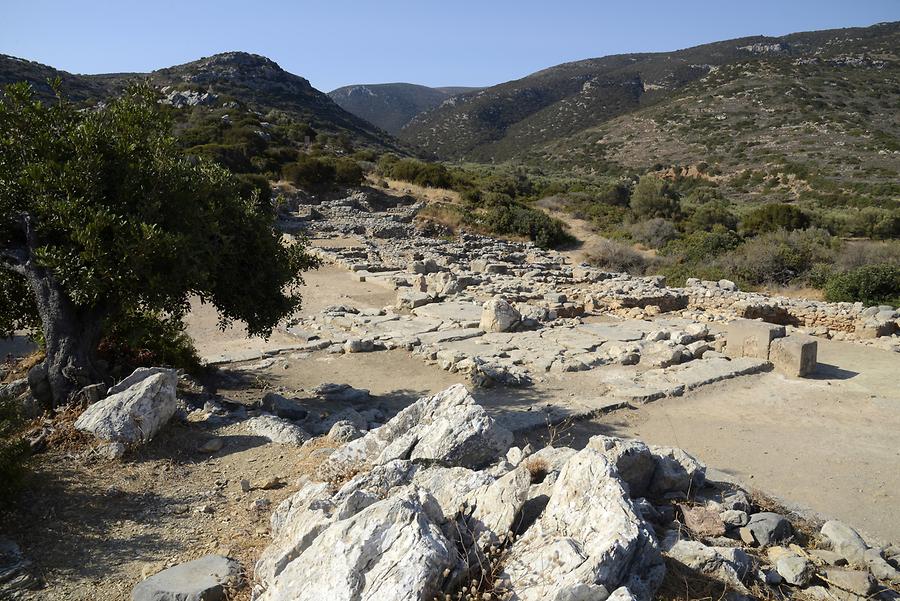Gournia - Palace Complex#

Gournia - Palace Complex, September 2013, © Gerhard Huber, under CC BY-NC 4.0 +Edu
Wie nobel die Kreter lebten, als sie über ihre Insel noch selbst bestimmten, erzählt die antike Stadt Gournia
Gournia Archaeological Site, Crete
, das 'minoische Pompeji'. Doch das ist mehr als 3500 Jahre her. Eine minoische Kleinstadt gruppierte sich um ein palastähnliches 'Herrenhaus' mit weitem Hof, der wohl als Versammlungsplatz diente. Die gesamte Anlage folgte einem gut durchdachten Stadtplan. Wohn- und Handwerkerviertel sowie Magazin- und Palastbereich waren deutlich abgegrenzt. Die ineinander geschachtelten, zwei- bis dreigeschossigen Häuser errichtete man im Fachwerkbau, der einigermaßen resistent gegen Erdbeben ist. Im Erdgeschoss lagen Läden, Vorratskammern und Ställe, darüber die Wohnräume. Ein fortschrittliches Kanalisationssystem gehörte hier ebenfalls zum Standard – und trotzdem: auch Gournia fiel, wie alle Städte Kretas, der rätselhaften Katastrophe von 1450 zum Opfer und verschwand praktisch über Nacht von der Bildfläche.
How noble the Cretans lived when they made their own decisions about their island, the ancient city of Gournia
Gournia Archaeological Site, Crete
, the 'Minoan Pompeii' proves. But that was more than 3500 years ago. A Minoan town was grouped around a palatial 'mansion' with a wide courtyard probably serving as a meeting place. The entire facility followed a well thought out city plan. Residential and handicraft quarter as well as magazine and palace area were clearly separated. The nested, two- to three-storey houses were built in half-timbered construction, reasonably resistant to earthquakes. On the ground floor were stores, pantries and stables, above the living rooms. An advanced sewage system was also standard here - and yet: Gournia, like all the other cities of Crete, fell victim to the enigmatic catastrophe of 1450 and virtually disappeared from the scene overnight.